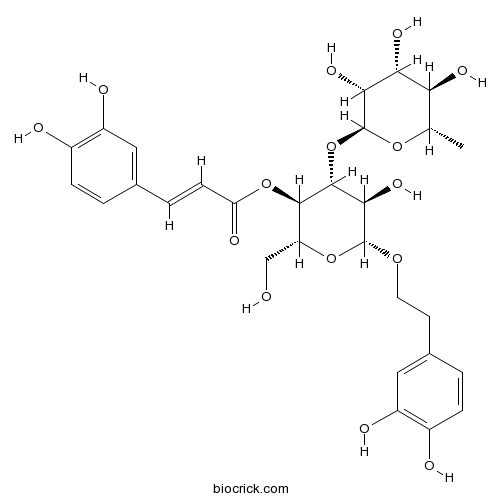Avicennia marina
Avicennia marina
1. The products in our compound library are selected from thousands of unique natural products; 2. It has the characteristics of diverse structure, diverse sources and wide coverage of activities; 3. Provide information on the activity of products from major journals, patents and research reports around the world, providing theoretical direction and research basis for further research and screening; 4. Free combination according to the type, source, target and disease of natural product; 5. The compound powder is placed in a covered tube and then discharged into a 10 x 10 cryostat; 6. Transport in ice pack or dry ice pack. Please store it at -20 °C as soon as possible after receiving the product, and use it as soon as possible after opening.
Natural products/compounds from Avicennia marina
- Cat.No. Product Name CAS Number COA
-
BCN4136
Acteoside61276-17-3
Instructions

Uptake and accumulation of polycyclic aromatic hydrocarbons in the mangroves Avicennia marina and Rhizophora mucronata.[Pubmed: 30099713]
This study investigated the uptake and accumulation of polycyclic aromatic hydrocarbons (PAHs) in two mangrove species, Avicennia marina and Rhizophora mucronata. We tested the hypothesis that A. marina would absorb and accumulate more PAHs than R. mucronata. One-year old seedlings of both species were subjected to Bunker Fuel Oil 180 for 3 weeks, and the concentration of PAHs was analyzed by gas chromatography-mass spectrometry (GC/MS). The concentration of PAHs was significantly higher in A. marina than in R. mucronata. The major portion of the PAH pool was in roots (96% in A. marina, 98% in R. mucronata) compared to leaves. The dominant PAHs in roots of both species possessed two to three rings and included phenanthrene, anthracene, fluorene, and acenaphthene. In shoots, PAHs in A. marina included phenanthrene, chrysene, anthracene, acenaphthene, benzo[k+b]fluoranthene, pyrene, benzo[a] anthracene, and benzo[a] pyrene, while those in R. mucronata included phenanthrene, naphthalene, fluoranthene, fluorene, and acenaphthene. Phenanthrene was the dominant PAH in roots and shoots of both species. The greater susceptibility of A. marina appears to be due to its greater root length and specific root length, which permit more exposure to oil than R. mucronata. Other contributory factors include root anatomical characteristics such as larger air spaces, lower suberization of root epidermal cells, lower concentrations of polyphenols, tannins, lignin, and a less efficient antioxidative system. This study provides novel information on differences in the uptake and accumulation of PAHs in two contrasting mangrove species.
Natural antibacterial agents from arid-region pretreated lignocellulosic biomasses and extracts for the control of lactic acid bacteria in yeast fermentation.[Pubmed: 30083790]
Bacterial contamination is one of the major challenges faced by yeast fermentation industries as the contaminating microorganisms produce lactic acid and acetic acid, which reduces the viability of yeast, and hence fermentation yields. The primary bacterial contaminants of yeast fermentations are lactic acid bacteria (LAB). This study aims to identify potential natural antibacterial fractions from raw and pretreated lignocellulosic biomasses found in Abu Dhabi, UAE, in terms of LAB inhibition capacity, allowing growth of the yeast. The analysis was carried out using plating technique. Pretreatment liquid of the mangrove stem Avicennia marina hydrothermally pretreated at 210 °C exhibited the widest inhibition zone with an average diameter of 14.5 mm, followed by the pretreatment liquid of mangrove leaf pretreated at 190 °C, Salicornia bigelovii pretreated at 202 °C and rachis of date palm Phoenix dactylifera pretreated at 200 °C. The compounds responsible for the antibacterial activity will be characterized in further study.


